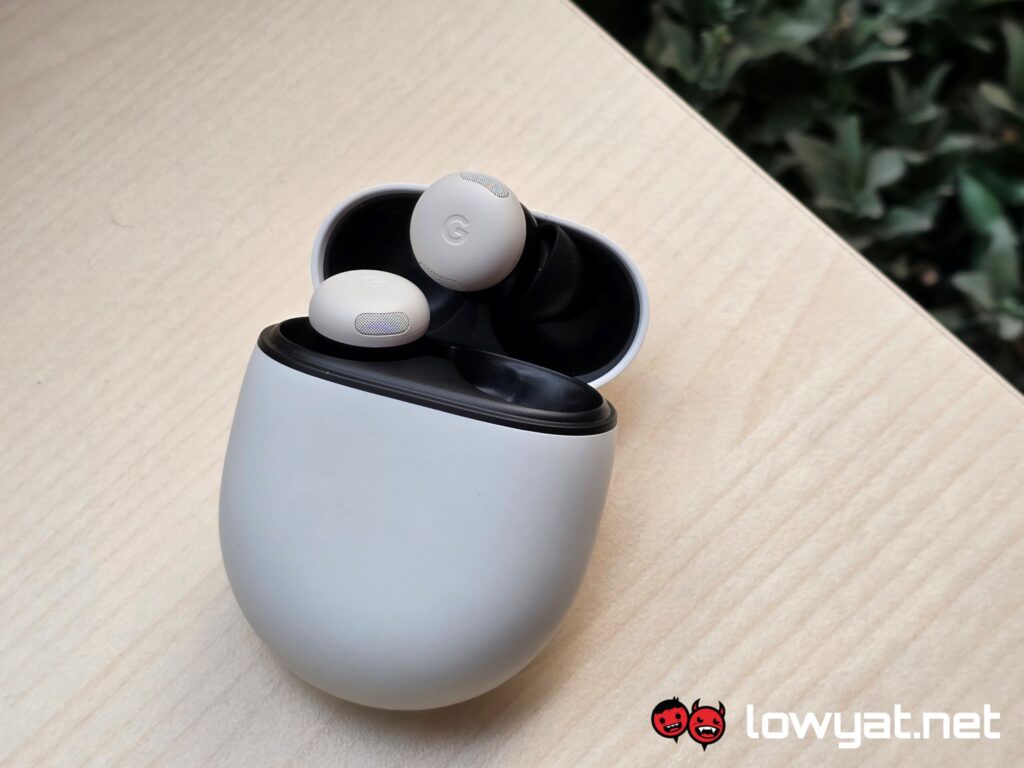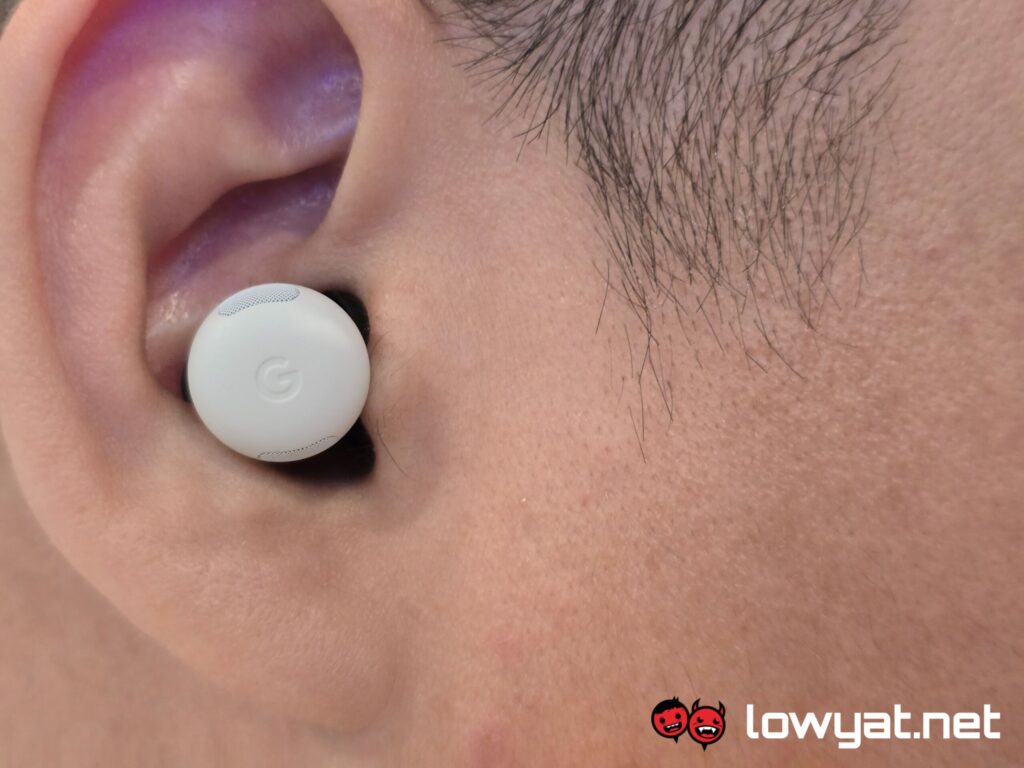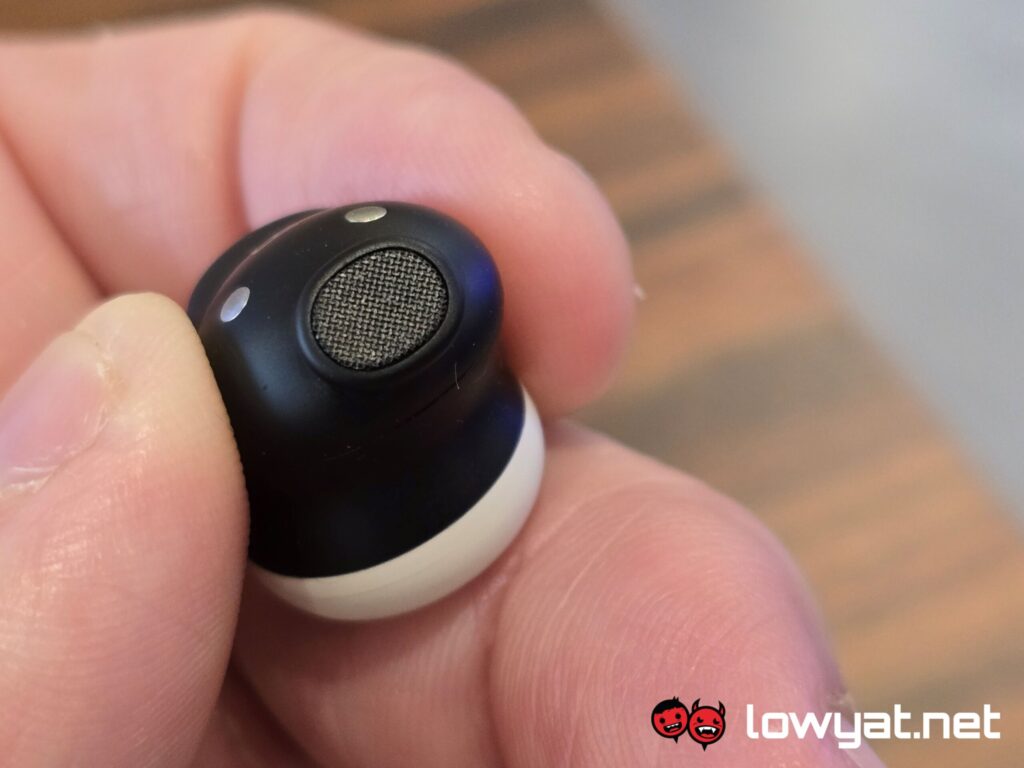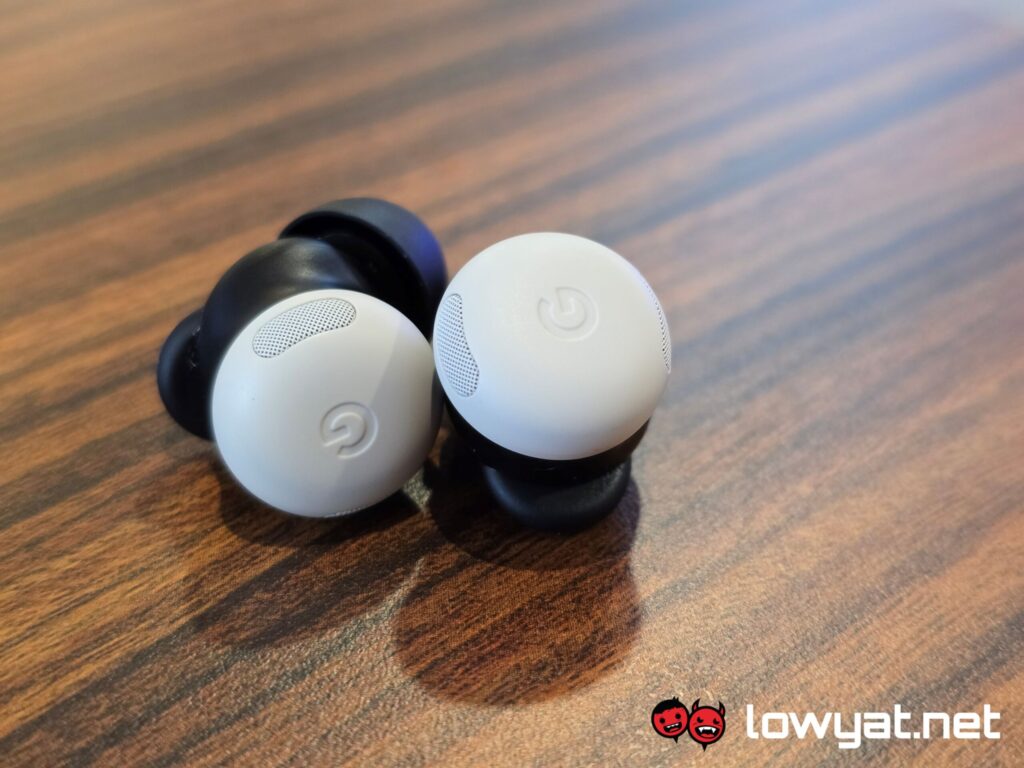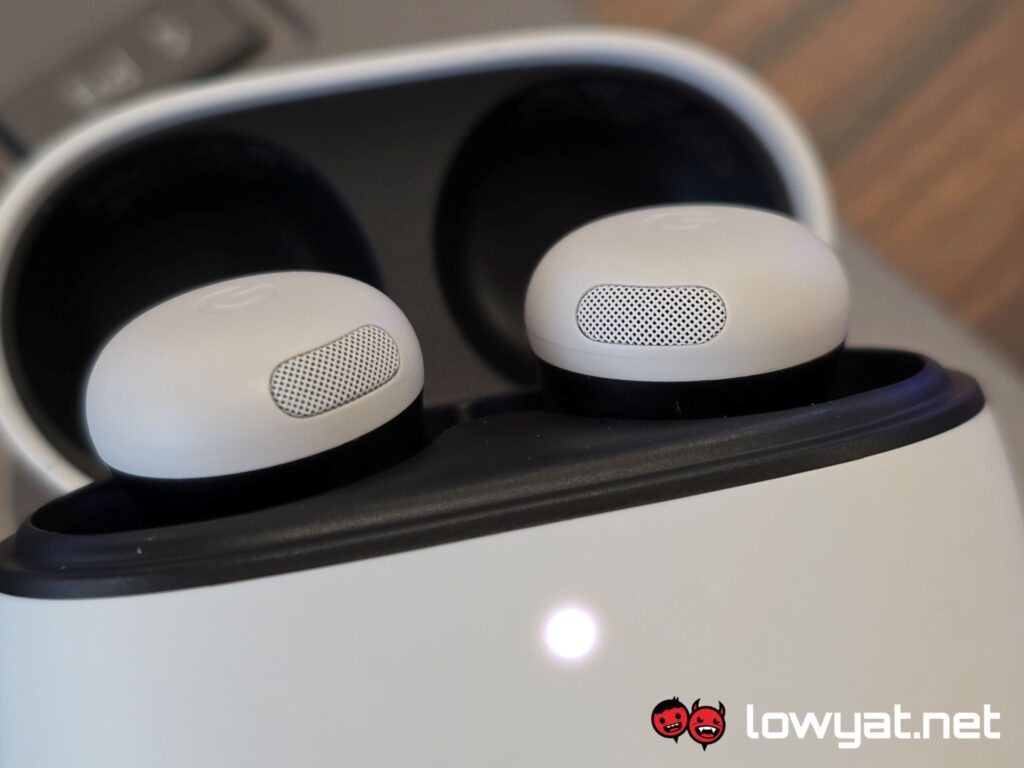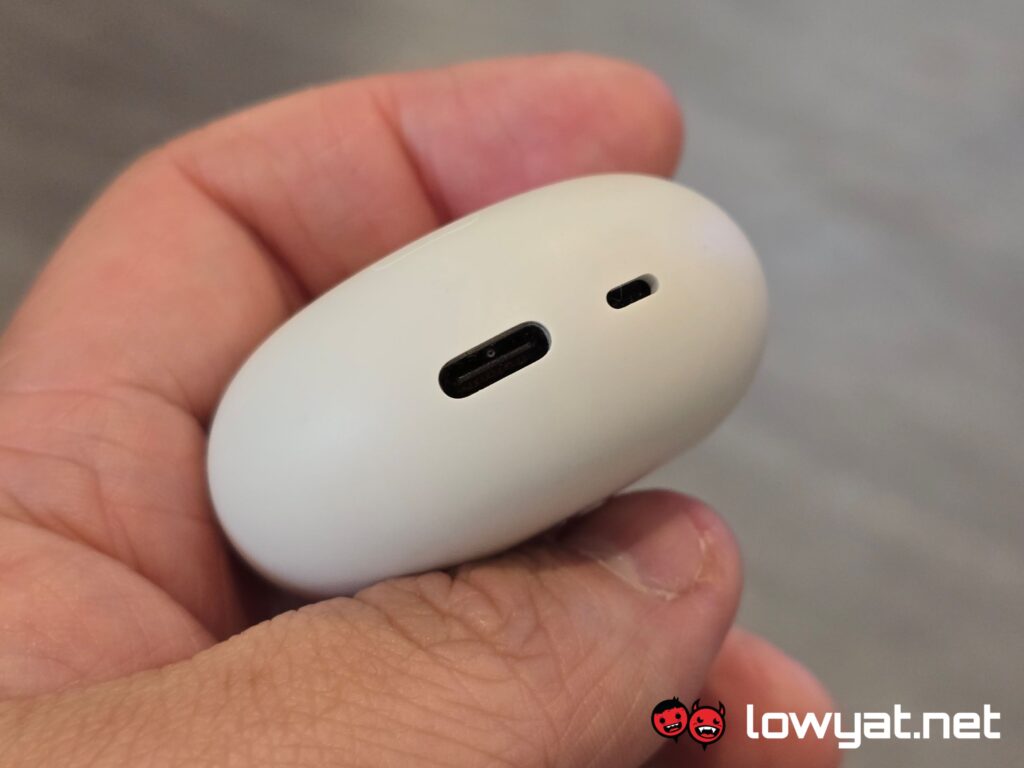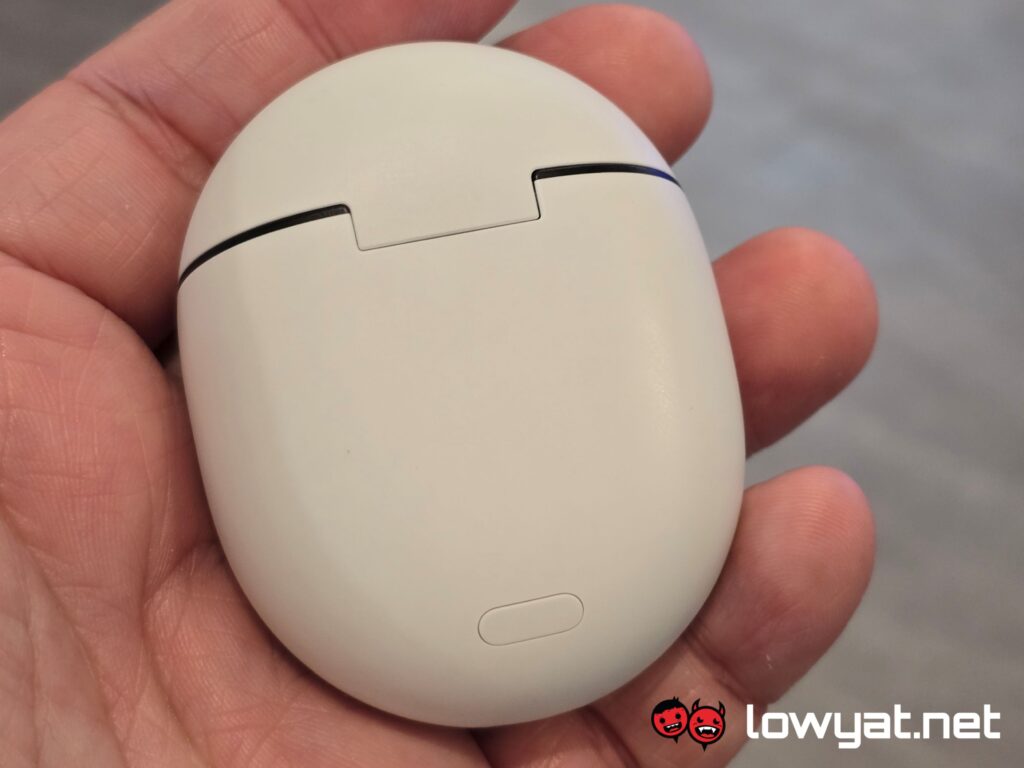The Google Pixel Buds Pro 2, among other Pixel products, are the search engine’s first pair of TWS earbuds to officially enter the Malaysian market. Like a shark to blood, I swam ferociously towards the opportunity and asked the local distributor for a pair to play with them. Thankfully, they said yes.
What Am I Looking At?
It wouldn’t be a stretch to say that the Pixel Buds Pro 2 are designed simply, because they truly are. As with its predecessor, Google has gone with a minimalist design for the audio accessory, in both the casing and the earbuds. Compared to the first Buds Pro, the new ones feature a more circular and spherical touch area, making them look more pronounced.
Internally, each earbud houses the Tensor A1 processor, 11mm custom designed dynamic speaker driver, and Active Noise Cancellation with Silent Seal 2.0. Connectivity-wise, they use Bluetooth 5.4, what Google is only describing as LE Audio codec, and a super wideband antenna. The charging cradle carries up to an additional 36 hours of battery, depending on whether ANC is turned on or off.
As this is a wholly-made Google product, there is support for Google’s Digital Assistant and more specifically, it supports Gemini. However, that function is unassigned by default and if you want it as an option, you will have to manually select it and choose which earbud you wish to have it working on.
The Pixel Buds Pro 2 does have IPX4 rating, both earbuds and casing, meaning that’ll both survive the occasional splash from most water sources but don’t expect them to survive a full-on immersion or dip into the kiddy pool. And you can forget about swimming with them in the ocean.
What’s Good About It?
The audio quality of the Pixel Buds Pro 2 sounds and feels really well-balanced, in a manner of speaking, as I believe that the Tensor A1 chip has a lot to do with the delivery. Out of the box, sound staging feels accurate, with the high-hat crashes sounding crisp but never sharp. Songs like Who Needs Friends by Royal Blood, which is just full of rhythmic drum beats and sound full enough without hurting my ears.
Moving on, the highs and mids err on the side of warm, making songs like Long Long Time by Linda Ronstadt feel really even more emotional, as does it with I’m Not The Only One by Sam Smith. Vocals, for that matter, do tend to feel a little sharp, especially if their octaves are on the high side – Matt Shultz from Cage the Elephant is a perfect example of this in the band’s hit song, Ain’t No Rest for the Wicked.
The lows have clearly been given extra attention by Google. Case in point, the bass in La Venus de Milo by Stacey Kent feels distinct, and each pluck feels like they have their own personality but more importantly, they do not drown out Stacey’s voice in the front or the drum beats in the background. The same can be said when listening to Feeling Good by Nina Simone, with the sound of the Tuba rumbling the back of my skull with each huff and puff. Another song that accentuates the lows is one of my favourite tracks, Digging My Potato by Yoko Kanno and the Seatbelts, with the humming of the Cajon reverberating subtly throughout the track.
Of all the TWS earbuds I have reviewed over the years, the Pixel Buds Pro 2 are by far the most comfortable pair I have ever had the pleasure of using. Granted, I had to swap out the default medium eartips for the larger pair and yes, there is still the occasional fidgeting with them on account of my cavernous aural spaces, but for the most part, I can sit with them in my ear for hours and not feel them.
Lightweight isn’t an exaggeration.
On top of being the lightest pair of earbuds I’ve ever used, they’re also pretty gesture and control-complete, compared to other earbuds. By default, you press and hold the surface of either earbud to activate ANC or Ambient mode. There is the option to disable both functions through the same gesture but you need to activate that via the dedicated Pixel Buds app. Also, volume can be controlled by swiping forward or back on the earbuds’s capacitive surface.
It’s important to also mention, I think, that both the ANC is certainly one of the most comfortable applications on any earbuds, with the Sound Pressure Level (SPL) not overwhelming my equilibrium but if I’m honest, could be a little stronger as I still get sound leakage from the outside-in. The passthrough mode, however, is impressive, with its clarity on par with the likes of the Technics AZ80, the Sony WF-1000XM5, and dare I say it, the Samsung Galaxy Buds3 Pro.
Battery life for the Pixel Buds Pro 2 is also long. I am talking eight hours of continuous use, and with ANC turned on the whole time. That’s on par with Sony’s most current TWS earbuds, the WF-1000XM5.
What’s The Catch?
Much of my frustration with the Pixel Buds Pro 2 is actually in the design of the earbuds themselves, and the way Google has made them sensitive to even the slightest adjustment in-ear. Typically and when in use, one would adjust the earbuds every now and then, simply because they tend to shift around in your canals, especially when you’re on the move. The issue here is that, even with the slightest adjustments on my part, the software registers the movement as me removing them and turns off the ANC or passthrough mode for a few seconds, before turning it back on again.
That’s fine and all, but what really irritates me is that when I’m a little more vigorous with said adjustments – by that, I mean really twisting it into my lugholes – The earbuds register that as me taking it out of my ears and thus powering them down for a split second, before powering up again. I know this, because the earbuds give off a chime that you hear whenever you take them out from their charging case and stick them into your ears.
Earbuds are susceptible to interference, surprisingly.
On another note, the Buds Pro 2 aren’t the most shielded pair of TWS earbuds I’ve used and have a tendency to suffer from wireless interference that presents itself in the form of sound cutting out or becoming intermittent in one earbud but, surprisingly, never both at the same time. Oh, and the Pixel Buds Pro app only indicates the battery life of the earbuds but not how much juice is left inside the case.
For another matter, Google has been ambiguous about which codecs its new earbuds support. I actually had to do a little bit of digging because of this and found out that, to my disappointment, it doesn’t support any variation of the AptX codec and supports SBC and AAC. The search engine has said that LC3 support is coming but hasn’t said when.
Should I Buy It?
At RM1,099, the Google Pixel Buds Pro 2 and its SRP goes up against the likes of the Samsung Galaxy Buds3 Pro and, dare I say it, the Nothing Ear. In terms of audio fidelity, however, my experience with these earbuds puts them more on par with the more premium WF-1000XM5 and the extravagantly priced Bowers & Wilkins Pi7 S2, the latter more with regards to the balance between all three pitches, vocals, and sound staging. It’s not as deliciously rich or as warm but they do come close.
Again, my only, if not biggest, gripe with these earbuds are how merely shifting or adjusting them ever so slightly in my ears sets off the onboard pressure relief or briefly turns them off, even while they’re still nestled in your ears. That is just a small price to pay, though, given the benefits that you get with them.
Photography by John Law.
Follow us on Instagram, Facebook, Twitter or Telegram for more updates and breaking news.

